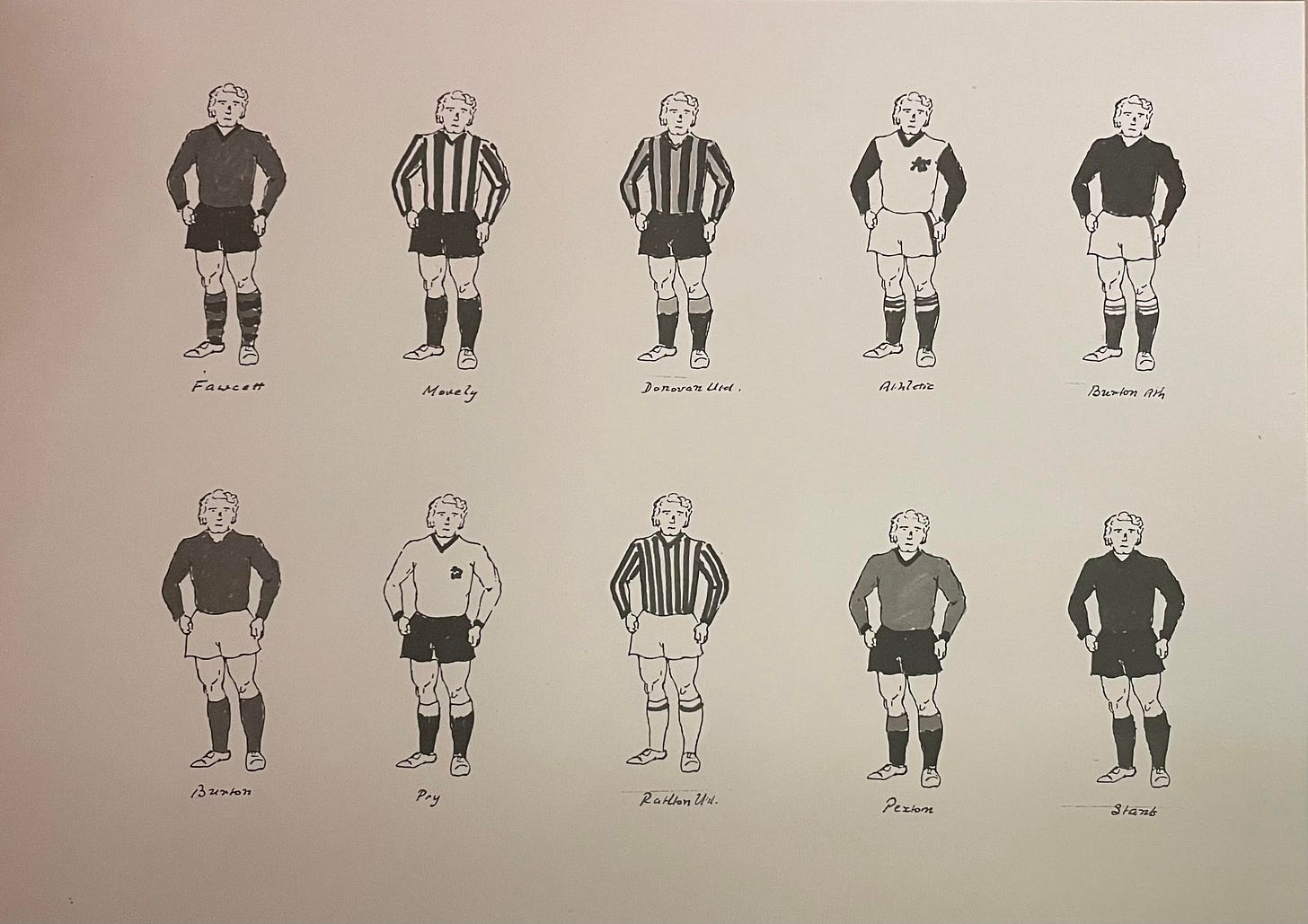We can’t really tell you what a unit is, the original rules of the game don’t specify. And we don’t want to presume. We just know the C.O. hands orders to them. But we suggest it is a grouping of things.
Maybe you want to collect things from around your home. And store them somewhere, to bring them out when you think you need to use them, as a unit. When you play PINS.
Maybe you want to weigh them. Or name them. Or dream about them, expanding and contracting, as you watch the neighbour mowing their lawn, the rattling strokes of the green hand-propelled mower sounding like the sound of the tide going in and out, like that time when you visited the South Coast - the first time ever down south, in Swanage, no-one in the family had ever been - and still audible, though you had shut the window when he started.
You know the neighbour’s name and unit, it’s J. L Spiers, R.G.A. and it’s because it’s in the services prayer book he gave you last year.
Maybe your unit contains the poor boy, Darnell, who wasn’t very well and played the accordion while he sang hymns for auntie Lily in Bury, though she’s not my actual auntie, she’s my auntie Marion’s best friend and they both hid under a table during the bombing. Or the man in a homemade bath chair with no legs my mum and her friends used to tease when she was a girl. Or a company of the rats that scared the Warden stiff, some bigger than dogs, when the bottoms flooded near the Leeds-Liverpool canal. Or all the buses in the sheds just across from the Greyhound where they once laid out the dead from the pit and where someone, back in the late 1980s, once walked in and demanded all the tables in the pub were covered in full pints, paid for them and walked out again, no questions asked. Or the young man in the doorway on Whalley Road in Clayton-Le-Moors, who stands with his arms folded in the doorway smiling and waving, he’s simple and he never went to school and his mother looks after him. Maybe.
We suggested in the last post that it could be loose NORI bricks, made from fireclay from the Accrington lake, squared on a pallet. Sometimes, as one of the illustrations in this article suggests, it's not easy to store NORI bricks nowadays on a pallet, as NORI’s gone and the bricks are being used up, by sensible people, who know their worth and strength.
The unit could also be a measurement, in imperial, or from a chain survey, or as buttons you keep in a tin; it could be scale models of the rebellious eel fishermen of Utrecht, or a reimagining, in H0 scale, of “The Nobblers”, the long lost football team of Windy Nook, Tyneside. It could be a series of snapshots taken from Estonian television commercials from the 1970s and 1980s, made by Harry Egipt (born 1950). Maybe a remodelling using homemade diecast figures, (moulds obtainable from S.E.G.O.M. Ltd., Lower Balloo Rd, Groomsport, Bangor, Co Down BT 19 2LU, that’s what’s written down), of a Punch and Judy show in an original C19th proscenium arch : in Strangers’ Hall, Norwich; originally, so the scrap cutting says, the house of a mediaeval merchant. It could be the collected writings of the meeting of the Felling and District Labour Group, taken on Monday the 5th of March, 1945, at 7.30pm with the following attendees: Chairman - Coun. A. Cunningham JP: Councillors - J. Garvey, A. C. Henderson, J.T. Kane: Messrs C. Doherty, J. Wood, T. Smith and G.R.J. Adams. It could be a small pocket cash book (the Victor Cash Book from the VICTOR stationery co., Ref, NB3C, Approved Quality system trademarked, 48 pages, 16.5 x 10cm) and its contents; a reprise of your cassette tape collection of classical music, denoting the contents of 150 cassette tapes. One’s got Peter Warlock on.
We were talking about units, and what they were. More visual clues in the Museum.




